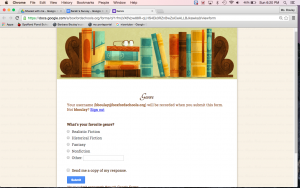Happy New Year!
Caroline Knorr, an Editor at Common Sense Media, laments in her January 4, 2016 online article , that “8- to 12-year-olds average nearly six hours a day on entertainment media”! However, she also reassures parents that “even if your tweens and teens know way more about media and technology than you do, you can still help them navigate the digital world safely, responsibly, and productively”.
In Gr. 6 Media classes, we are discussing the importance of thinking about the messages behind the media students see and hear every day.
One of Knorr’s recommended resolutions is to “Encourage healthy skepticism. The ability for tweens and teens to think about the messages behind their media is more important than ever. Ads and content are increasingly becoming entwined, and studies show kids have a hard time telling the difference between them. Online stories are regularly unmasked as hoaxes. Even companies’ privacy policies are filled with legalese. Help kids to think critically about all the content they consume. Ask: Who made this? Who’s the audience? What are the messages?”
To this end, Gr. 6 students are creating advertisements in their Media classes. The ads are based on the surveys they each conducted with their classmates in the fall. Are their ads completely true? Who is their audience? What are the messages?
I look forward to sharing some of the students’ work with you soon!
|
MSLMA Standard 5.7 Use appropriate medium to produce an original product to communicate research results. |
|

